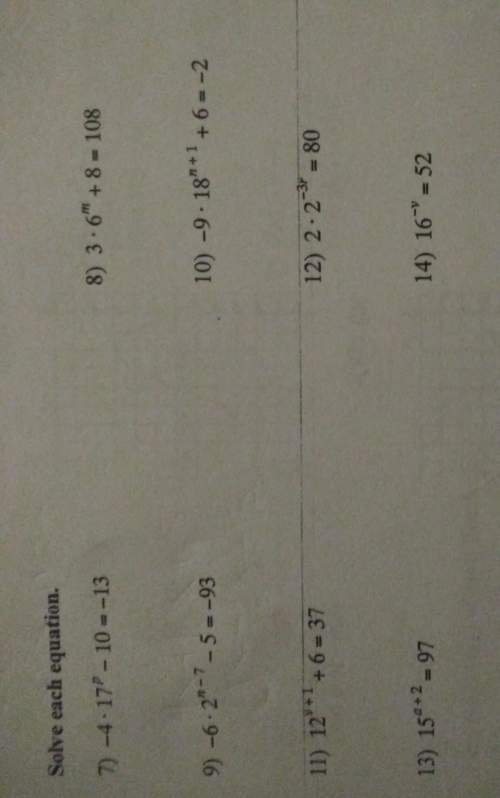
Mathematics, 18.06.2020 18:57 pbargy9551
(2 points) Another model for a growth function for a limited pupulation is given by the Gompertz function, which is a solution of the differential equation dPdt=cln(KP)P where c is a constant and K is the carrying capacity. (a) Solve this differential equation for c=0.05, K=1000, and initial population P0=100. P(t)= . Hint: Note that dPdt=cln(KP)P=−c(lnP−lnK)P and then use Separation of Variables with u-substitution in the integration step (or do this mentally). (b) Compute the limiting value of the size of the population. limt→[infinity]P(t)= . (c) At what value of P does P grow fastest? P= . Hint: Differentiate dPdt again with respect to t (implicitly) and use the first derivative test to find the value of P that gives a maximum in dPdt.

Answers: 1
Another question on Mathematics

Mathematics, 21.06.2019 20:00
Two line segments are shown in the figure below. suppose that the length of the line along the x-axis is 6, and the length of the hypotenuse of the triangle is 10. what is the equation of the hypotenuse line (shown in red, below)?
Answers: 3

Mathematics, 21.06.2019 21:00
Roger could feed 5 walruses with 4 kilograms of fish. how many walruses could he feed with 7.2 kilograms of fish?
Answers: 1


Mathematics, 22.06.2019 00:40
Astock has a 25% probability of increasing by $10 and a 75% probability of decreasing by $5. what is the stocks expected increase or decrease?
Answers: 1
You know the right answer?
(2 points) Another model for a growth function for a limited pupulation is given by the Gompertz fun...
Questions



Chemistry, 04.11.2020 22:30

History, 04.11.2020 22:30


Mathematics, 04.11.2020 22:30


Physics, 04.11.2020 22:30




Biology, 04.11.2020 22:30



Business, 04.11.2020 22:30

Mathematics, 04.11.2020 22:30

Mathematics, 04.11.2020 22:30

Biology, 04.11.2020 22:30

Mathematics, 04.11.2020 22:30





